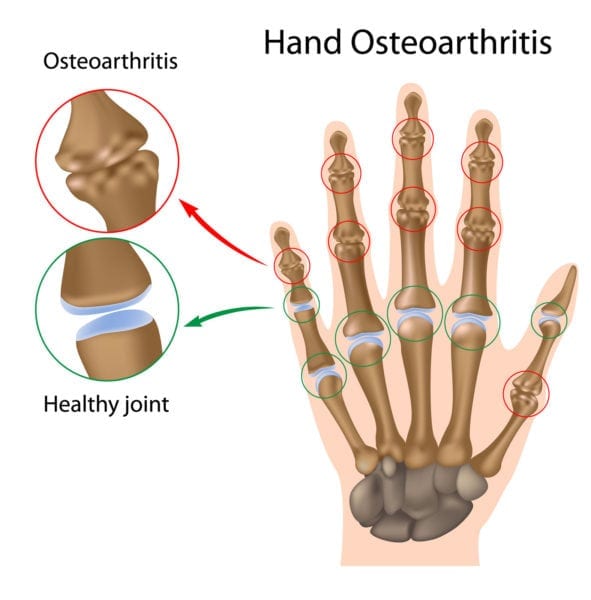FITNESS AND WELLNESS
Arthritis, Part I

What if we told you that somewhere in your body you have arthritis? Would you be shocked? Scared? Fearful? Now what if we told you that over 70 percent of the current population, regardless of age, also has arthritis without pain or discomfort! That’s right – just because an x-ray or MRI may show arthritic changes within your joints, does not mean that you’ll have pain.
What is Osteoarthritis?
Arthritis (artho=joint, itis=inflammation) is a leading cause of disability and fear throughout the United States, with osteoarthritis (OA) the most common form. OA is the breakdown and degeneration of joint cartilage and membranes that leads to stiffness and decreased range of motion within the joint. This limited motion can often cause pain in the surrounding joints and not in the arthritic joint itself. OA is typically found in weight bearing joints such as knees, hips and the low back, but can be found in any joint throughout the body.
What Osteoarthritis is Not!
Recent studies have helped demonstrate that while degenerative changes associated with OA do not directly cause pain, they continue to be blamed as the problem behind the symptoms. The reality, however, is that the signs and symptoms of OA are a natural and expected part of the aging process. Take, for instance, a study that found 34 percent of asymptomatic people >60 years old were found to have rotator cuff tears and shoulder OA. One in three people without shoulder pain have rotator cuff tears and shoulder OA. These changes naturally occur throughout the body, with another study reporting two out of every four people without knee pain had confirmed degenerative changes in their knees.
Time to Change Our Thinking
As mentioned above, OA is more closely related to the natural wear and tear that occurs in our joints as we age and not a primary reason for pain or suffering. Think about your mother, father, or grandparents. Over time, they develop wrinkles and other age-related changes, such as gray hair and thinning skin. Despite these signs of aging, there are no complaints about face pain from the wrinkles or scalp pain from the changes in hair color. We age similarly on the inside as we do the outside.
External Signs of Aging Internal Signs of Aging
● Wrinkles ● Arthritis
● Gray/white hair ● Degenerative changes
● Dry, thin, patchy skin ● Rotator cuff fraying/tears
● Sagging skin ● Labral fraying/tears
What To Do
1. Get active. We have all heard that ‘motion is lotion’, and with OA that precisely is the case. Motion helps to decrease the inflammation that occurs as a result of OA (and causes joint stiffness) and, combined with a strengthening and stretching program, can keep your joints mobile and strong.
2. Watch what you eat. The Arthritis Foundation reports on its website that being “just 10 pounds overweight can put an extra 30 to 60 pounds of pressure on the knees.” With the average American walking 10,000 steps per day, think of the extra stress you could be adding around your knees and hips.
3. Visit a Doctor of Physical Therapy. We are experts in joint mobilizations, movement education, exercise prescription, and pain management – experts in helping to get you back to your goals and lifestyle without the need for injections, surgery, or pain medication.
4. Keep your eyes open for Part 2 of our Arthritis Mini Series where we delve deeper into ways to help during flare ups, and what your imaging results actually mean.
Matthew Turner
A native of Sheffield, England, Matthew Turner moved to North Carolina in 2016, with his wife Rachael, and has worked in an outpatient orthopedic setting, specializing in manual therapy. Matt is the Facility Director and lead physical therapist for the PHOENIX Rehabilitation and Health Services, Charlotte location. Matt's clinical expertise focuses on outpatient orthopedics, post-operative conditions, concussion, and sports/work-related injuries. Matt underwent post-graduate training with NAIOMT and is a Certified Manual Physical Therapist. He is also certified in Dry Needling and Blood Flow Restriction Training.


